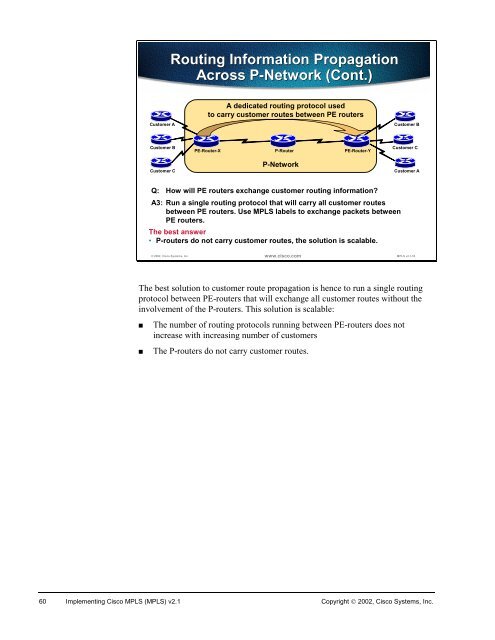You also want an ePaper? Increase the reach of your titles
YUMPU automatically turns print PDFs into web optimized ePapers that Google loves.
Customer A<br />
Customer B<br />
Customer C<br />
Routing Information Propagation<br />
Across P-Network P-Network (Cont.) (Cont.)<br />
A dedicated routing protocol used<br />
to carry customer routes between PE routers<br />
PE-Router-X P-Router<br />
PE-Router-Y<br />
P-Network<br />
Q: How will PE routers exchange customer routing information?<br />
A3: Run a single routing protocol that will carry all customer routes<br />
between PE routers. Use <strong>MPLS</strong> labels to exchange packets between<br />
PE routers.<br />
The best answer<br />
• P-routers do not carry customer routes, the solution is scalable.<br />
Customer B<br />
Customer C<br />
Customer A<br />
© 2002, Cisco Systems, Inc. www.cisco.com <strong>MPLS</strong> v2.1-53<br />
The best solution to customer route propagation is hence to run a single routing<br />
protocol between PE-routers that will exchange all customer routes without the<br />
involvement of the P-routers. This solution is scalable:<br />
■ The number of routing protocols running between PE-routers does not<br />
increase with increasing number of customers<br />
■ The P-routers do not carry customer routes.<br />
60 Implementing Cisco <strong>MPLS</strong> (<strong>MPLS</strong>) v2.1 Copyright © 2002, Cisco Systems, Inc.
















